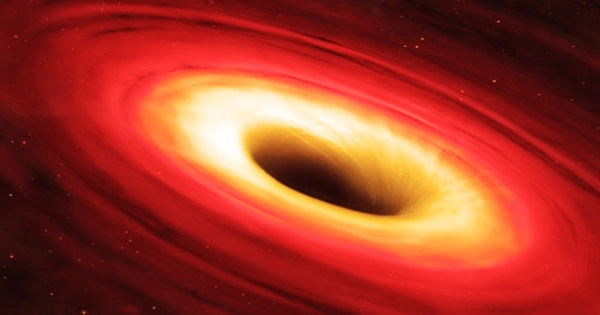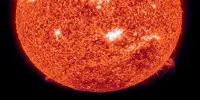In the core area of a galaxy 236 million light-years distant, a strange eruption occurred. The data point to a magnetic field reversal as the likely reason – something that has never been seen before. The All-Sky Automated Survey for Supernovae was the first to discover galaxy 1ES 1927+654 intensifying in visible light by roughly 100 times, according to a manuscript approved for publication in The Astrophysical Journal. This occurred in March 2018, however, a review for earlier alterations revealed that the object had been brightening for many months at the time.
In May 2018, NASA’s Swift spacecraft surveyed the galaxy and discovered that ultraviolet emissions were 12 times brighter than predicted. However, it was dropping, indicating that the apex had been missed. The galaxy was one of a tiny handful of objects that had been observed operating in this manner at the time. However, it became unique in June 2018. Its X-ray emission was entirely gone. Dr. Sibasish Laha, a research scientist at NASA’s Goddard Space Flight Center, stated in a statement that “rapid variations in visible and ultraviolet light have been detected in a few dozen galaxies similar to this one.” “However, this is the first time we’ve seen X-rays fully disappear as other wavelengths brighten.”
A supermassive black hole exists at the center of practically every galaxy if not all of them. The massive, dense objects consume matter, which eventually forms an accretion disk around them. The corona, a cloud of extremely hot particles that emit very high-energy X-rays, surrounds the black hole. The corona is theorized to be maintained by black hole magnetic fields. However, the earliest theory was that the system had been disturbed by a star that went too close and was torn apart and transformed into plasma. Astronomers now believe that the supermassive black hole’s magnetic field has reversed.
“A magnetic reversal, where the North Pole becomes south and vice versa, appears to best suit the findings,” said co-author Mitchell Begelman, a professor in the University of Colorado Boulder’s department of astrophysical and planetary sciences. “At first, the field diminishes at the accretion disk’s edges, causing increased heating and brightness in visible and UV light.” Magnetic field reversal has occurred often on Earth throughout geological time, and this discovery shows that it is also experienced by many other objects in the cosmos.
















